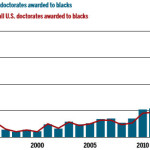All across campus, changes are ahead for students, faculty, administrators and parents alikeBy JUNE KRONHOLZ, Staff Reporter of The Wall Street Journal From The Wall Street Journal Online
Higher education is in for turbulent times. The largest-ever group of students is packing its bags for college. And these students aren’t just the sons and daughters of affluent, white families from the suburbs, as they were a generation or two ago. An increasing number are poor and older, and they’re more likely to be minorities and to need financial aid. At the same time, cash-strapped states are trimming their spending on public universities and community colleges. All that means many campuses are crowded, tuitions are rising, there’s more demand for aid, qualified students are being turned away, and competition for admission to prestige colleges has never been tougher. Here are a few trends to watch as colleges grapple with these demographic and economic tests: 1. Costs Keep RisingTuition has been climbing at two or three times the inflation rate for three decades, and public-university prices rose at least 10% in eight of the past 22 years, says the College Board. Now, the question isn’t whether tuition will continue to rise, but by how much. Two years ago, many state governments cut their yearly payments to their universities, triggering big tuition increases. With state economies rebounding, those cuts may have bottomed out. But state funding now accounts for only about 37% of college budgets, down from half two decades ago, and that means colleges are relying more on tuition to pay the bills. When tuition goes up, however, universities face bigger demands for financial aid, which they fund, in part, by…raising tuition again. Meanwhile, the competition among colleges to raise their standing in college-ratings guides means a bidding war is under way for hotshot professors. And the increased fund-raising demands on college presidents mean they’re now commanding Wall Street-size salaries. Still, with demand for college seats likely to remain high, the colleges have little incentive to be too stingy with themselves. “No one is pushing for efficiency very hard,” says Ohio University economist Richard Vedder. 2. Diversity Is EndangeredEven with a flood of students to choose from, colleges are competing for the same relatively small pool of teenagers with top grades, high admissions-test scores and stellar transcripts. That favors youngsters from affluent families and suburban high schools, who are edging out the low-income students whose numbers are soaring. Many affluent students who might once have assumed they would head for top private schools are finding the competition stiffer because of their numbers, and increasingly they are enrolling in public flagship universities. That’s pushing the lower-income students, who tend to be less prepared, into second-tier schools, leaving many top schools less diverse. But packing a freshman class with National Merit Scholars — even if it means paying them to attend — has its own rewards. Bright students raise a school’s ratings in college guides. That makes recruiting other top students easier, helps attract superstar professors and lures big-dollar gifts from happy admirers. Those rewards become increasingly important as public colleges turn to private donors to replace the funding that taxpayers once supplied. Although colleges widely use affirmative action to increase minority enrollment, they have been less avid when it comes to recruiting low-income students, and economic diversity is narrowed. Public colleges are “busy managing their profits and prestige, and turning away from their mission,” frets education economist Tom Mortenson. 3. Merit Merits AidFinancial aid once went to the poorest kids. Now, grants awarded for academic merit or special talent in sports or the arts are growing faster than grants based on need. States spend 25% of their scholarship money on merit awards, up from 10% a decade ago, while private colleges have gone to a 36% merit share, up from 27%. Private colleges have always used merit aid to round out their orchestras or sports teams, of course. But now they increasingly see merit aid as a way to help them win the ratings-guide race and to “shape” a freshman class by, for example, recruiting science majors. Fifteen states, meanwhile, are using merit scholarships to lure bright in-state students to their local universities. The states calculate that the tactic will motivate high schoolers and raise the rates of those going to college, keep educated young people in-state after graduation, and make themselves more attractive to employers. Florida and Georgia are finding their merit-aid programs hugely expensive, but politically difficult to scale back. Even so, another half-dozen states are looking at their own merit plans. 4. A New LookThe competition for students has set off a building boom as colleges splurge on such amenities as “wellness centers,” food-court cafeterias and, most recently, student unions with sports bars, night clubs and the requisite soaring atrium (Ohio University’s is five stories tall). Universities see lavish facilities as a recruiting tool: Kids can’t tell much about a school’s academic quality on a visit, but they can visualize themselves sitting under a tree in the glass-enclosed Main Street that’s part of every new student union. Students at the University of Vermont, which is building a $52 million center, included an outdoor amphitheater among their top priorities. The University of Minnesota’s newly renovated student union features a fountain, cast in Italy in 1620, outside its “fireplace lounges.” Ohio State University plans a $100 million center. 5. Where the Money IsThe new Uncle Moneybucks for college kids in need of tuition help is their neighborhood bank or Rotary Club. Last year, students borrowed $10.6 billion for tuition from commercial banks that set their interest at market rates. That’s 20% of what students borrowed in low-interest loans under the government’s guaranteed student-loan program. But it’s a nearly tenfold increase over private-bank, nonsubsidized borrowing just nine years ago. Meanwhile, churches, social-service groups and other private organizations gave away $2.3 billion in scholarships in 2000, up 237% from a decade earlier. The private money is stepping in where public money and college funds no longer stretch. The federal government caps loans under its guaranteed program at about half the cost of tuition at a public college. A record 5.1 million students qualified for $4,050-a-year federal Pell Grants to low-income students last year — so many that most students had to settle for far less to make the money stretch. 6. Doubling UpWith many state campuses full, colleges are looking for ways to enroll more students without having to build more classrooms. One way to do that is competency assessments — that is, if a student can prove he’s a skillful writer, he won’t have to take English 101. Most colleges already give academic credit to high school students who score well on the College Board’s Advanced Placement tests. Other competitors are certain to get into the field. The shortage of seats also is making e-learning newly attractive. Colleges are working online classes into their curriculums so students can take a course or two from home. In its latest survey of distance learning four years ago, the Education Department found that 90% of public colleges offered at least 10 online courses. 7. For-Profits ProsperThe crush of new students, a helpful hand from Congress and their own marketing savvy are making for-profit colleges a growing force. The University of Phoenix, which initially aimed its courses at working adults who needed just a few credits to finish their degrees, now has abolished its 23-or-older age restriction and enrolls 228,000 students. Apollo Group Inc., which owns the school, also is starting a community college-type chain aimed at people already in the work force. Online Kaplan University, owned by Washington Post Co., is adding new master’s programs in education. And for-profits now are a major provider of health-care workers, including nurses. What’s changed, says University of Phoenix President Laura Palmer Noone, is that 21-and-younger students are shrinking as a share of overall enrollment, even as their numbers expand, while older students, immigrants, and those already in the job market are looking for online and evening training that the for-profits pioneered. Also important is the for-profits’ rising favor on Capitol Hill and in the White House, which are irked with the public and private colleges over soaring tuition. Among other things, they have plans to include more for-profits in federal student-aid programs and to require nonprofits to accept their transfer credits. 8. Maximizing MajorsAcademic departments that once never talked to each other are joining up to offer programs that increasingly mix the liberal arts with sciences and technology. Vanderbilt University offers a program called art, enterprise and public policy. Amherst College President Anthony Marx is urging faculty to come up with environmental and human-rights programs that aren’t “trapped by disciplinary walls.” Part of the shove comes from parents who fret that an arts or history degree won’t cut it in today’s job market. But the greater push is coming from the universities trying to differentiate themselves. “Everyone is trying to niche” by picking specialties they can market to prospective students, says Michael Crow, president of Arizona State University, which is devoting one of its four Phoenix-area campuses to interdisciplinary studies. Local communities can provide grist for new interdisciplinary studies. Arizona State is promoting “rapid urbanization” as an academic theme. The new University of California at Merced has the Sierra Nevada Research Institute looking at issues like fire ecology and snowpack studies. 9. Teaching’s In Fashion
Talk about niches: A growing number of schools are marketing themselves as places that emphasize teaching, of all things. Among them, the College of Charleston says it teaches its students how to do research, but has spurned doing research itself in favor of teaching. “We have a special niche — it’s the teacher-scholar model,” says Charleston Vice President Virginia Freedman. Giving up research aspirations generally consigns colleges to second- or third-tier status and means forgoing the research grants that help pay for the labs and science buildings that state budget cuts have made prohibitive. But with tuitions rising, and students incurring years of debt to finance their educations, it’s also tougher for universities to consign undergraduate teaching to part-timers while high-priced professors huddle in their labs. 10. New PartnersWith state-government funding on the decline, universities are looking for new sources to fill the gap — or, as Arizona State’s Mr. Crow puts it, “we’re broadening our investor list.” Arizona State, which plans to almost double in size to 92,000 students over the next 12 years, has turned to the taxpayers of Phoenix, Scottsdale and Mesa to help build new campuses in their cities. Phoenix put up “several hundred million” dollars in land, infrastructure and construction, and Scottsdale pledged $120 million. UC Merced is developing a 1,200-acre residential community that it expects will help fund future operations and construction. And Arizona State is talking with a developer about putting a “regional amenity” on 100 acres of a 6,000-acre housing tract. Mr. Crow talks of an academic school or program on the site, but says so far he hasn’t made a deal.
Other Readings of Interest
|
|||
|











